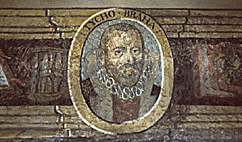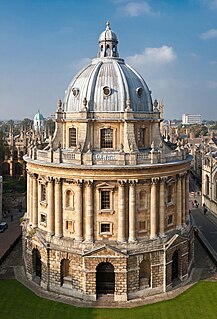 W
WThe Bodleian Library is the main research library of the University of Oxford, and is one of the oldest libraries in Europe, and derives its name from its founder, Sir Thomas Bodley. With over 13 million printed items, it is the second-largest library in Britain after the British Library. Under the Legal Deposit Libraries Act 2003 it is one of six legal deposit libraries for works published in the United Kingdom, and under Irish law it is entitled to request a copy of each book published in the Republic of Ireland. Known to Oxford scholars as "Bodley" or "the Bod", it operates principally as a reference library and, in general, documents may not be removed from the reading rooms.
 W
WThe Bodleian Libraries are a collection of 28 libraries that serve the University of Oxford in England, including, most famously, the Bodleian Library itself, as well as many other central and faculty libraries. As of the 2016–17 year, the libraries collectively hold almost 13 million printed items, as well as numerous other objects and artefacts.
 W
WThe Bodley Medal is awarded by the Bodleian Library at Oxford University to individuals who have made "outstanding contributions ... to the worlds of communications and literature" and who have helped the library achieve "the vision of its founder, Sir Thomas Bodley, to be a library not just to Oxford University but also to the world".
 W
WThe Clarendon Building is an early 18th-century neoclassical building of the University of Oxford. It is in Broad Street, Oxford, England, next to the Bodleian Library and the Sheldonian Theatre and near the centre of the city. It was built between 1711 and 1715 and is now a Grade I listed building.
 W
WConvocation House is the lower floor of the 1634–1637 westward addition to the University of Oxford's Bodleian Library and Divinity School in Oxford, England. It adjoins the Divinity School, which pre-dates it by just over two hundred years, and the Sheldonian Theatre, to its immediate north.
 W
WA Discovery of Witches is a 2011 historical-fantasy novel and the debut novel by American scholar Deborah Harkness. It follows the story of Diana Bishop, a history of science professor at Yale University who, after accidentally finding an elusive, long-thought-lost manuscript, is compelled to embrace the magic in her blood that she has sought to keep out of her life and engage in a forbidden romance with charming vampire Matthew Clairmont.
 W
WA Discovery of Witches is a British fantasy television series based on the All Souls Trilogy by Deborah Harkness, named after the first book in the trilogy. It is produced by Bad Wolf and Sky Productions, and stars Teresa Palmer, Matthew Goode, Edward Bluemel, Louise Brealey, Malin Buska, Aiysha Hart, Owen Teale, Alex Kingston, and Valarie Pettiford.
 W
WDuke Humfrey's Library is the oldest reading room in the Bodleian Library at the University of Oxford. Until 2015, it functioned primarily as a reading room for maps, music, and pre-1641 rare books; following the opening of the new Weston Library, it is now an additional reading room for all users of the Bodleian, as the Weston Library operates a reading room for special collections. It consists of the original medieval section (1487), the Arts End (1612), and the Selden End (1637). It houses collections of maps, music, Western manuscripts, and theology and arts materials. It is the main reading room for researchers of codicology, bibliography, and local history. It is also the location of the University Archives and the Conservative Party Archive.
 W
WGoogle Books is a service from Google Inc. that searches the full text of books and magazines that Google has scanned, converted to text using optical character recognition (OCR), and stored in its digital database. Books are provided either by publishers and authors through the Google Books Partner Program, or by Google's library partners through the Library Project. Additionally, Google has partnered with a number of magazine publishers to digitize their archives.
 W
WThe painted frieze at the Bodleian Library, in Oxford, United Kingdom, is a series of 202 portrait heads in what is now the Upper Reading Room. It was made in 1619, and the choice of worthies to include was advanced for its time, featuring Copernicus and Paracelsus as well as Protestant reformers. The portraits have been attributed to the London guild painter Thomas Knight; they were taken from at least ten different sources, according to current views.
 W
WThe Radcliffe Camera is a building of Oxford University, England, designed by James Gibbs in neo-classical style and built in 1737–49 to house the Radcliffe Science Library. It is sited to the south of the Old Bodleian, north of the Church of St Mary the Virgin, and between Brasenose College to the west and All Souls College to the east. The Radcliffe Camera's circularity, its position in the heart of Oxford, and its separation from other buildings make it the focal point of the University of Oxford, and as such it is almost always included in shorthand visual representations of the university.
 W
WThe Weston Library is part of the Bodleian Library, the main research library of the University of Oxford, reopened within the former New Bodleian Library building on the corner of Broad Street and Parks Road in central Oxford, England.